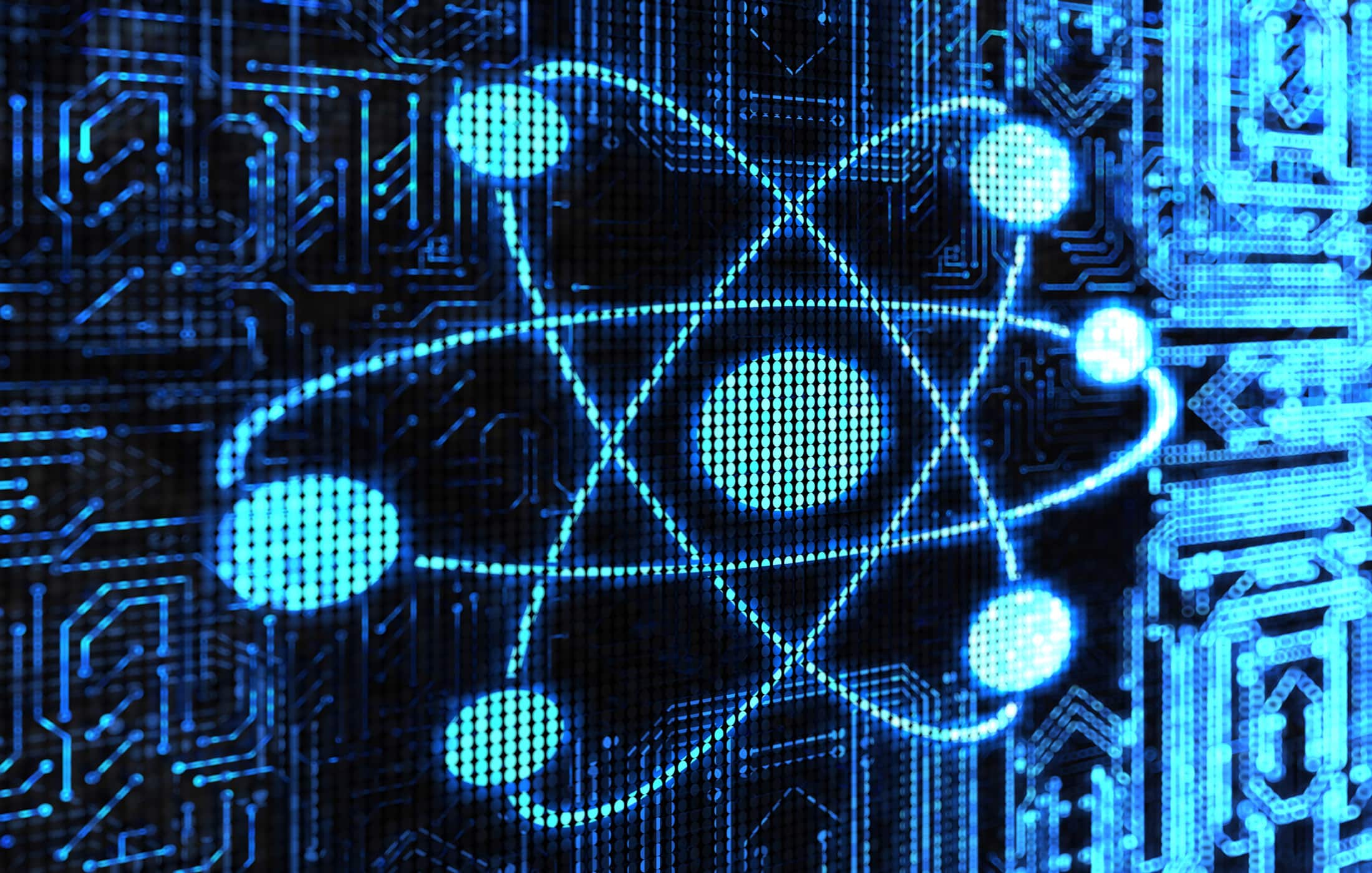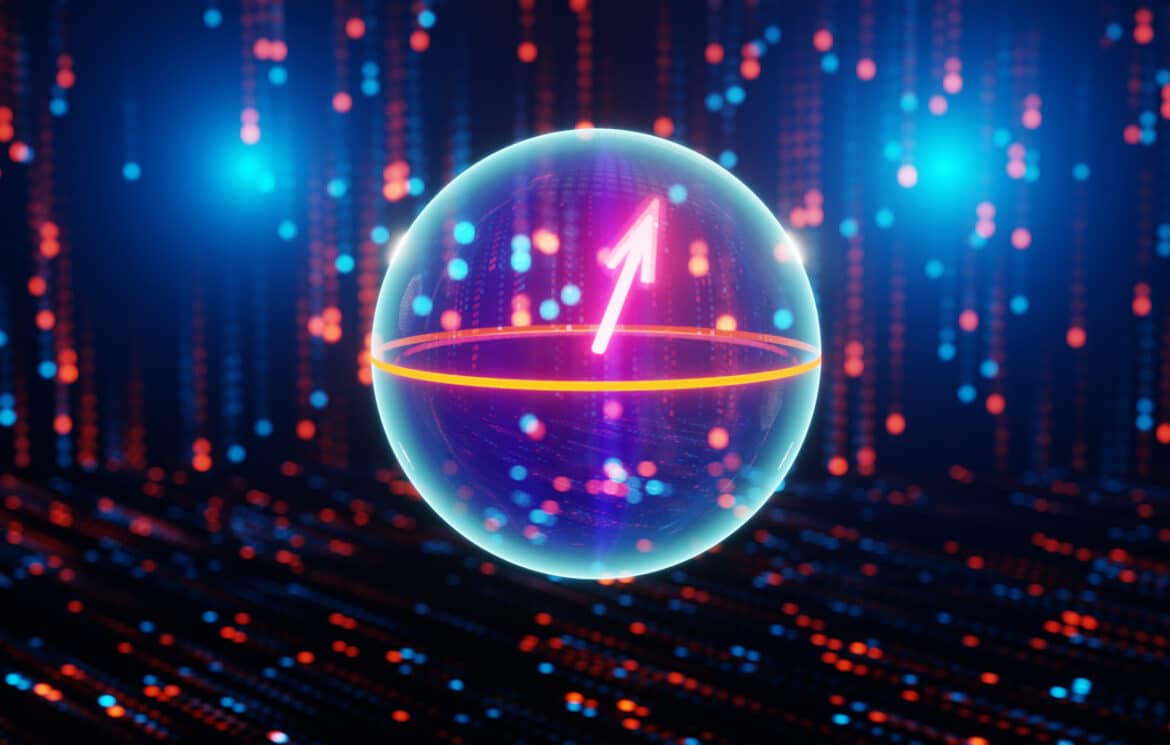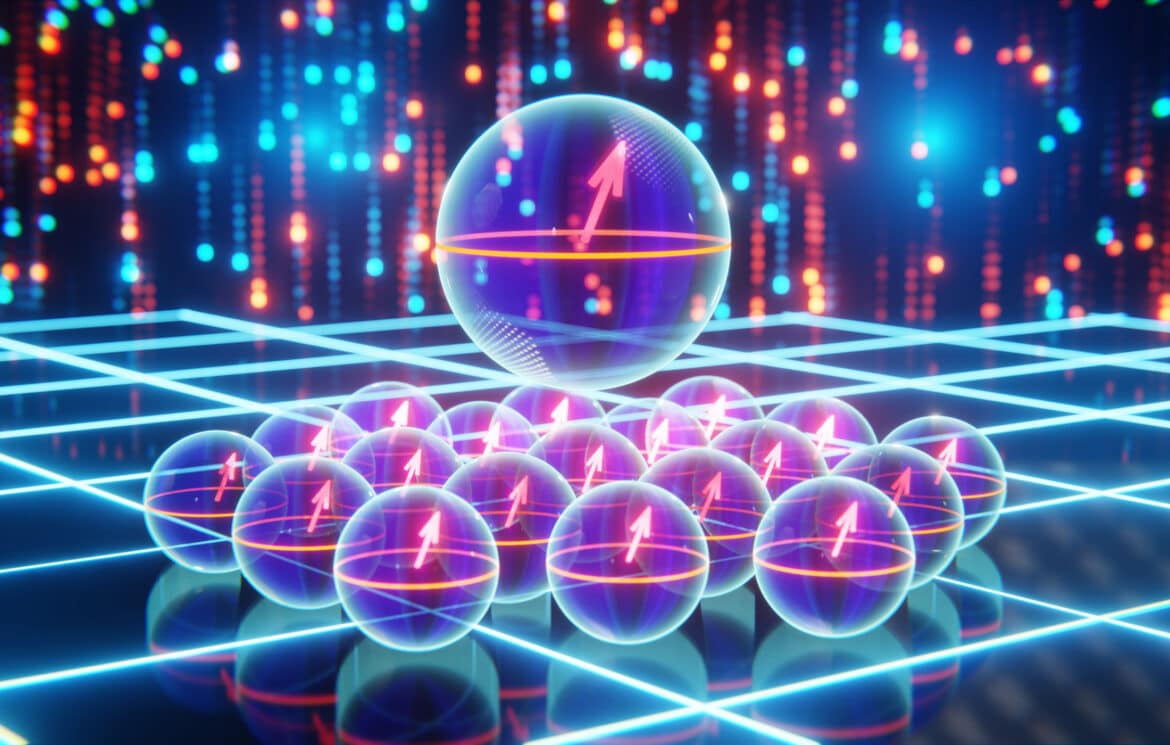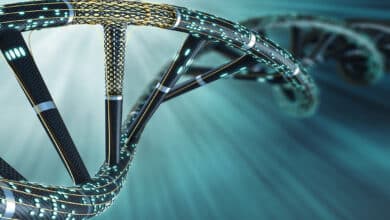Quantum Computing Modalities: Topological Quantum Computing

Table of Contents
(For other quantum computing modalities and architectures, see Taxonomy of Quantum Computing: Modalities & Architectures)
What It Is
Topological Quantum Computing is a modality that seeks to encode quantum information in exotic states of matter that have topological degrees of freedom, and to perform quantum gates by braiding or otherwise manipulating these topological objects. The central promise of topological QC is built-in error protection: information stored in a topological form is inherently protected from local noise by global properties (similar to how a knot’s existence doesn’t depend on the exact rope configuration, only on its topological class).
In more concrete terms, topological quantum computing often refers to using non-Abelian anyons – quasiparticles that can occur in certain two-dimensional systems – as carriers of quantum information. Unlike ordinary fermions or bosons, when you exchange (braid) non-Abelian anyons, the quantum state of the system undergoes a unitary transformation that depends only on the topological class of the braiding path, not on the details of how it’s carried out. This unitary can serve as a quantum gate. Because it’s topologically defined, small perturbations or noise that do not alter the braid’s topology do not cause errors in the quantum information. Essentially, as long as the anyons are kept far apart and braiding is done without them coming too close (which could cause them to annihilate or interact non-topologically), the computation is resistant to local disturbances.
A leading candidate for non-Abelian anyons are Majorana zero modes (which are quasiparticles that are their own antiparticles) in topological superconductors. These Majorana modes are expected to exhibit so-called Ising anyon statistics (a type of non-Abelian statistics). In a typical picture, one might have a pair of Majorana zero modes (MZMs) that together encode a qubit (two Majoranas = one fermion mode = two-level system). The quantum information (the occupancy of that fermionic mode, 0 or 1) is stored non-locally across the two Majoranas. To perform a gate, one would physically exchange two MZMs – for instance, moving Majorana A around Majorana B – which results in a transformation of the two-qubit state space according to the braid group. Measuring a qubit could be done by bringing two Majoranas together to fuse them and observing whether they produce a fermion or not (this is a topological measurement).
More abstractly, topological QC can be described in the language of topological quantum field theory (TQFT) or modular tensor categories, where anyons are particles with certain fusion and braiding rules. A computation is a braiding diagram (akin to a spacetime knot), and outcomes can sometimes be determined by the overall topology (like link invariants). One famous model is Kitaev’s toric code, which demonstrated how a system can have ground states with topological degeneracy and anyonic excitations that could be used for robust qubits. Kitaev’s work in 2003 laid the foundation for how one might engineer a system to have these properties, e.g. a spin lattice with a particular Hamiltonian.
Mathematical Formulation: The math of topological QC often involves braid group representations. If you have $$n$$ non-Abelian anyons, the space of their possible joint states (with some overall fusion outcome fixed) forms a multi-dimensional topologically protected subspace. Braiding anyons corresponds to applying a unitary that is essentially a representation of the braid group on $$n$$ strands. For a simple example, Ising anyons (Majoranas) have fusion rules: $$\sigma \times \sigma \to 1 \oplus \psi$$ (where $$\sigma$$ is the anyon and $$\psi$$ is a fermion). The braiding of $$\sigma$$ anyons is represented by Pauli matrices in the computational subspace (not exactly, but conceptually). A more powerful kind of anyon is a Fibonacci anyon, which has fusion $$\tau \times \tau \to 1 \oplus \tau$$ and can approximate universal quantum gates through braiding. In general, performing a controlled NOT or a $$\pi/8$$ phase gate might correspond to fairly complex braid patterns.
One key parameter is the topological gap – similar to AQC, a topological system has an energy gap that separates the degenerate ground state manifold (where the anyon encoding lives) from excited states. This gap allows for particle-like excitations that carry the topological charge. If the gap is large compared to temperature, these anyons are stable and won’t accidentally form or annihilate.
The fault-tolerance in topological QC comes from the fact that local errors (like a small magnetic field fluctuation hitting one part of the system) cannot easily change the global topological state. It would require a large, non-local operation (like moving an anyon or creating/annihilating an anyon pair) to cause a logical error. This is inherently suppressed if the system’s Hamiltonian is such that creating anyons costs energy (given by the gap). In essence, the quantum information is stored in a subspace that the environment finds “hard to reach.”
Key Academic Papers
The theoretical foundation was laid by Alexei Kitaev in 1997 and 2003, introducing the concept of anyons for fault-tolerance and the toric code model which is a blueprint for a topologically ordered system that can store qubits. Michael Freedman, Michael Larsen, and Zhenghan Wang (2002) also made key contributions, connecting anyon systems to computational complexity and showing how braiding certain anyons can perform quantum computation (they worked out how Fibonacci anyons are universal, for example). A comprehensive review by Chetan Nayak, Steven Simon, et al. (2008) titled “Non-Abelian anyons and topological quantum computation” is a seminal reference summarizing the field up to that point. It covers the theory of anyons, candidate physical systems (like fractional quantum Hall states at filling 5/2 which are theorized to host Majorana anyons), and the braiding logic.
On the experimental side, Leo Kouwenhoven’s group (Delft) published a famous paper in 2012 showing a zero-bias conductance peak in Indium Antimonide nanowires attached to superconductors, consistent with the existence of Majorana zero modes. This spurred a race in making more refined Majorana devices. Jason Alicea, Yuval Oreg, and others proposed practical geometries for networks of Majorana wires that could implement qubit operations (circa 2010-2011). In 2018, Microsoft-affiliated researchers (at Station Q and Copenhagen) thought they saw the quantized conductance and other signatures of Majoranas, but later analysis suggested some signals were from disorder. Finally, in 2022, Microsoft’s Azure Quantum team announced a new milestone: they successfully engineered a device showing the expected topological phase and detected a topological gap and Majorana modes more reliably. They termed it a “key scientific breakthrough … elusive building blocks for a topological qubit“. This result, if verified, is a big step: they demonstrated the ability to induce a topological superconducting phase and measure a protected state with a measurable topological gap. It indicates they can create and manipulate Majorana pairs in a controlled way. The logical next step is to show they can braid these modes and demonstrate qubit operations with them.
Comparison To Other Modalities
Topological QC can be seen as a special type of adiabatic/analog quantum computing combined with a physical error correction. Instead of actively correcting errors with syndrome measurements (as in surface codes on superconducting qubits), topological QC tries to design the qubit itself to be robust. It’s a bit like having qubits that are passively protected by physics, versus the usual approach of actively correcting fragile qubits with overhead. If realized, this could drastically reduce the overhead needed for fault tolerance – potentially from thousands of physical qubits per logical qubit (in a surface code) down to maybe 1 or a handful of physical anyons per logical qubit.
However, topological quantum computing is so far largely theoretical because the required topological states of matter are hard to produce. By contrast, gate-based QC has made practical strides with “unprotected” qubits plus error correction. One can think of topological QC as trying to incorporate the error correction into the hardware level.
In terms of running algorithms, a topological quantum computer (say built from Majorana zero modes) would execute gates by braiding – which could be slower (moving quasiparticles around is not fast compared to electric gates in a circuit). But if the qubits are much more stable, you may afford slower gates. Some operations might also require a combination of topological and non-topological operations; for example, in Majorana systems, braiding can give you a set of gates (Clifford gates) but to get a universal set you need something like measuring fermion parity or forcing certain anyons together (which might not be fully topologically protected). This is analogous to magic state injection in topological quantum computing.
Advantages
- Inherent Fault-Tolerance: The standout advantage is that qubits encoded in topological degrees of freedom are naturally protected from many errors. As Kitaev phrased, topological qubits are “fault-tolerant by their physical nature.” This means lower error rates at the hardware level and potentially much lower overhead for quantum error correction. For example, Microsoft’s approach aims for qubits with error rates of say $$10^{-6}$$ or better without needing complex error correction – far better than the ~$$10^{-3}$$ of today’s physical qubits that require thousands of operations to fix. If every gate is essentially as reliable as a logically error-corrected gate in other systems, scaling up algorithms like Shor’s becomes far more feasible.
- Stability of Qubits: Topological qubits (like a pair of Majoranas representing one qubit) can be very long-lived because the environment can’t easily decohere a non-local qubit. The two Majoranas might be centimeters apart; a local perturbation might hit one Majorana, but that cannot flip the encoded bit by itself. It would take a non-local error (hitting both ends coherently or creating an anyon and moving it around) to cause a logical flip. In principle, this gives very high coherence times. We see hints of this in experiments: Majorana modes, if they exist, show up as zero-bias stable states that don’t easily mix with continuum states.
- No Crosstalk Between Qubits: In many proposed topological platforms, qubits are intrinsically isolated unless you deliberately braid them. For instance, Majorana pairs in separate nanowires won’t interact unless you connect the wires. This isolation (a consequence of topology requiring global operations to see effects) helps avoid unwanted couplings and noise between qubits, a major issue in other systems where qubits are packed densely.
- Cool Physics and New Phases: An ancillary advantage is that pursuing topological QC leads to the discovery of new topological phases of matter (like topological insulators, fractional quantum Hall states at certain fillings, or superconductors with strong spin-orbit coupling). These enrich fundamental science and often have other potential applications (e.g., Majorana modes could also be used in topological quantum memory or as Majorana-based qubits for different uses like sensing). The Majorana fermion itself was a long-sought quasiparticle, and demonstrating it was a big scientific achievement.
- Scaling Perspective: If each physical qubit is more robust, you may need far fewer of them to solve a problem. Microsoft often posits that a few thousand topological qubits might suffice for large algorithms, whereas tens or hundreds of thousands of noisy qubits would be needed in other architectures for the same task. In theory, topological QC could “skip” the prototype error-correction stage and directly achieve a scalable machine.
Disadvantages
- Extremely Challenging to Realize: To date, no topological qubit has been conclusively demonstrated. There have been tantalizing experiments (e.g., in 2012, a Delft University group observed signatures in conductance consistent with Majorana zero modes; Microsoft’s lab observed a quantized zero-bias peak in 2018, though it was later partly retracted as likely not Majoranas). Creating the specific conditions for topological matter – ultra-clean materials, specific magnetic fields, very low temperatures, the right nanostructures – is hard. Majorana modes, for instance, are pursued in semiconductor nanowires with superconductivity and strong spin-orbit coupling under certain magnetic fields. The evidence is still being gathered and some claims have been contested. Without stable anyons, topological QC remains a promise.
- Braiding is Slow and Difficult: Moving quasiparticles around adiabatically in a solid-state system is non-trivial. For Majoranas in nanowires, one concept is to use an array of wires and tune couplings (gates) to effectively swap their positions (like a Majorana “shuffling” circuit). This requires very precise control of multiple gate voltages in concert, and likely still on microsecond to millisecond timescales – slower than typical superconducting gates (~10-100 ns). Other anyon platforms, like interferometry in quantum Hall systems, are also experimentally complex (we don’t have reliable braiding experiments yet in quantum Hall anyons either, beyond some interference results).
- Limited Gate Set (for Some Anyons): Not all anyon systems are computationally universal by braiding alone. For example, Ising anyons (Majoranas) allow Clifford gates by braiding, but to get a non-Clifford gate (like a $$\pi/8$$ phase, necessary for universal computing) one either needs to use a trick like magic state distillation (which introduces overhead and pushes you back to some error-correction needs) or rely on non-topological operations (like interacting four Majoranas, which is not topologically protected, or measuring a certain parity – which has to be done carefully). Other anyon types like Fibonacci anyons are universal by braiding, but those are even more exotic (they might exist in certain fractional quantum Hall states like 12/5 filling, which are very hard to realize experimentally).
- High Overhead to Create Pairs: To get a qubit you often need at least 4 Majorana modes (2 pairs), and those have to be kept apart and controllable. For multiple qubits, the system might need to keep many anyons well-separated. In a nanochip, that could mean a large footprint per qubit. For example, one design for a Majorana qubit chip has multiple nanowires and a junction network for one logical qubit. Scaling to thousands means integrating complex nanowire networks without cross-coupling or loss of the gap – an engineering nightmare. It might be doable with advances in materials and fabrication, but certainly not as straightforward as printing a million transistors; these are delicate quantum wires at the edge of current capabilities.
- Temperature and Materials Constraints: Topological superconductors for Majoranas need to be at very low temperatures (tens of millikelvin, like other superconducting qubits). Some fractional quantum Hall anyons only appear at high magnetic fields and very low temperatures (and they need 2D electron gas of high quality). So all the usual cooling and materials demands of quantum computing apply, often even more stringently (e.g., maintaining a superconducting proximity effect and a sizable spin-orbit coupling simultaneously). There’s also the need to control and measure these without destroying the delicate topological state – often requiring ultra-sensitive electronics (e.g. parity measurements via single-electron transistors or quantum point contacts).
- Still Requires Some Error Correction: While topological qubits promise low error rates, they are not magically perfect. They will still need error correction for very long computations, especially if only a subset of operations are topologically protected. For instance, if magic state injection is needed, those magic states have to be distilled with some overhead. That said, the hope is the error rates are so low that the number of cycles before an error is astronomically large, making a lot of error correction unnecessary. But we won’t know until we can actually test them.
Cybersecurity Implications
Topological quantum computing, if achieved, could dramatically accelerate the timeline for breaking cryptography. The current outlook with noisy intermediate-scale quantum (NISQ) devices and even first-generation error-corrected devices is that breaking RSA-2048, for instance, might require millions of physical qubits and many hours of runtime, which is likely a decade or more away. Topological qubits could change that calculus by providing very stable qubits such that each one is effectively a logical qubit. If Microsoft’s approach yields, say, a 100-qubit topological processor in a few years, those 100 qubits might be as powerful as 100 fully error-corrected qubits in a superconducting setup that would otherwise require thousands of qubits. Thus, the advent of topological QC could shorten the time horizon for quantum threats. This is one reason the field garners interest and funding: it’s high risk/high reward but could leapfrog in capabilities.
From a defense standpoint, topological qubits might also enable longer algorithms that currently seem daunting. For example, running Grover’s algorithm to brute-force a 128-bit key requires on the order of $$2^{64}$$ operations. That’s totally infeasible with today’s error rates; but a highly stable topological quantum computer might sustain the operations needed (still unlikely, but more plausible if error per operation is astronomically low). So, symmetric keys which are relatively safe against medium-size quantum computers might become vulnerable if a very large, stable quantum computer can be built.
However, because topological QC is hard, it also serves as a bit of a litmus test: if topological qubits become a reality, it likely means the field of quantum computing has matured significantly (many difficult milestones achieved). It would be a strong sign that all bets are off in terms of achievable quantum computing power.
On a positive note, if topological qubits are stable and can operate, they might also be used to strengthen quantum cryptography protocols. For instance, a topological qubit memory could store entangled states for long periods, enabling quantum repeaters for secure quantum communication over long distances. And the principles of topological protection could even be used in classical contexts for error-robust memories (though that’s more speculative).
In summary, topological quantum computing holds the key to making quantum computers truly scalable and reliable. For cybersecurity, this means that if topological QC succeeds, the full threat (and promise) of quantum computing can be realized: efficient breaking of current public-key crypto, and the need for quantum-safe algorithms becomes urgent. Many governments and companies acknowledge this potential, which is why even the possibility of topological QC adds impetus to the migration to post-quantum cryptography now (we must be prepared in case a breakthrough suddenly accelerates quantum progress).
Who’s Pursuing
Microsoft is the most prominent entity investing in topological quantum computing. Their dedicated quantum research lab, Station Q (led by mathematician Michael Freedman), along with experimental groups in the Netherlands (TU Delft), Copenhagen University (Niels Bohr Institute), and University of Sydney, have been working on Majorana-based qubits for years. They chose this approach instead of competing in the superconducting or ion trap space. As of recent reports, Microsoft has built hybrid devices (semiconductor-superconductor heterostructures) and is now in the phase of validating and scaling those into actual qubits.
Academic groups: aside from those partnering with Microsoft, Yuval Oreg and Moty Heiblum in Israel, Jason Alicea and Manuel Endres at Caltech, Ali Yazdani at Princeton, and Nayak/Stanford groups are doing various aspects of topological quantum research. In the fractional quantum Hall domain, IBM and some university labs have tried to detect non-Abelian anyons in 5/2 states (IBM reported some interferometry results consistent with them). However, none of these are near building a computer—this is fundamental research.
There are also efforts to use topological error correcting codes on conventional qubits (like surface codes) – sometimes the term “topological quantum computing” can refer to that as well, but here we mean the anyon approach. Companies like Quantinuum or IBM use the surface code, which is “topological” in that errors are handled in a topological way on a lattice of qubits, but that’s a different use of the term (requiring active correction).
In summary, topological quantum computing remains the holy grail approach: if it works, it changes everything. It’s being actively pursued by a smaller subset of the community due to the high experimental barriers, but recent advances keep it in play. Governments (like the US and EU) have funded topological matter research heavily, recognizing that if solved, it catapults the field forward. For now, all eyes are on whether the elusive Majorana-based qubits can be demonstrably braided and controlled to actually perform computation. If that happens, we will have a new frontrunner in the race to scalable quantum computers.
Quantum Computing Modalities Within This Category
Majorana Qubits
Majorana qubits are a form of topological qubit that leverage the unique properties of Majorana zero modes—quantum states theorized to appear in certain topological superconductors when electrons effectively split into two spatially separated components.
Fibonacci Anyons
Fibonacci anyons are a particular class of non-Abelian anyons predicted to emerge in certain fractional quantum Hall states and other exotic topological phases, where their braiding statistics alone can enable universal quantum computation.





